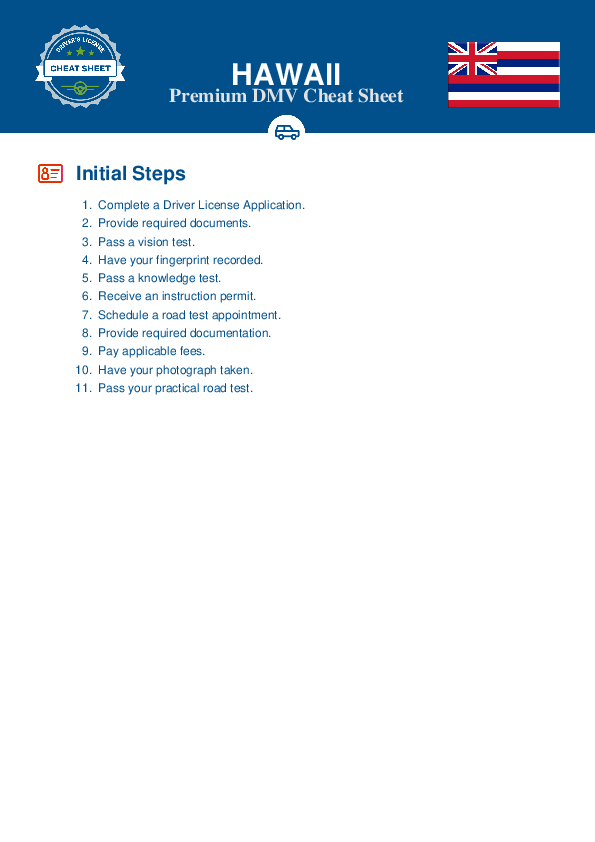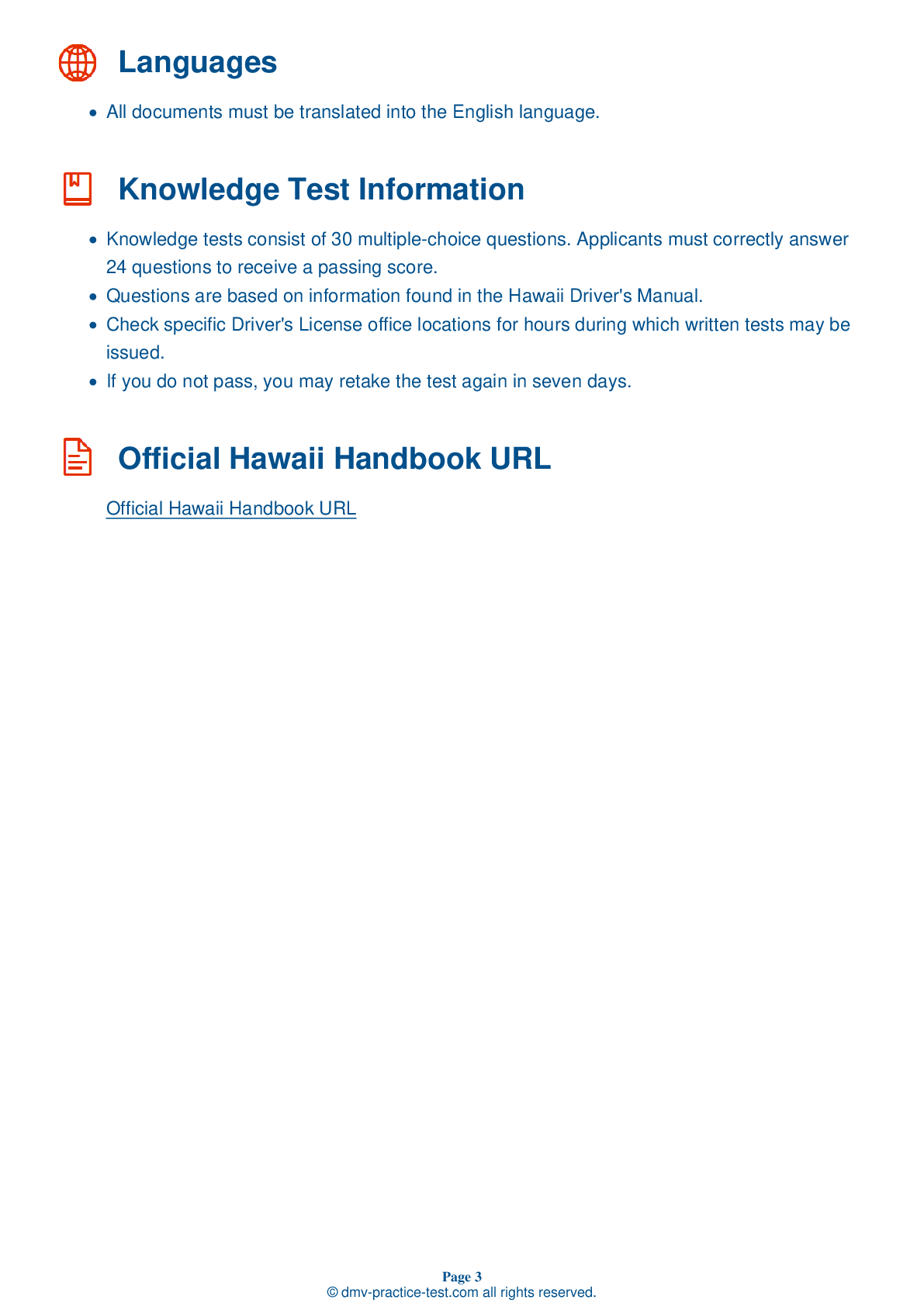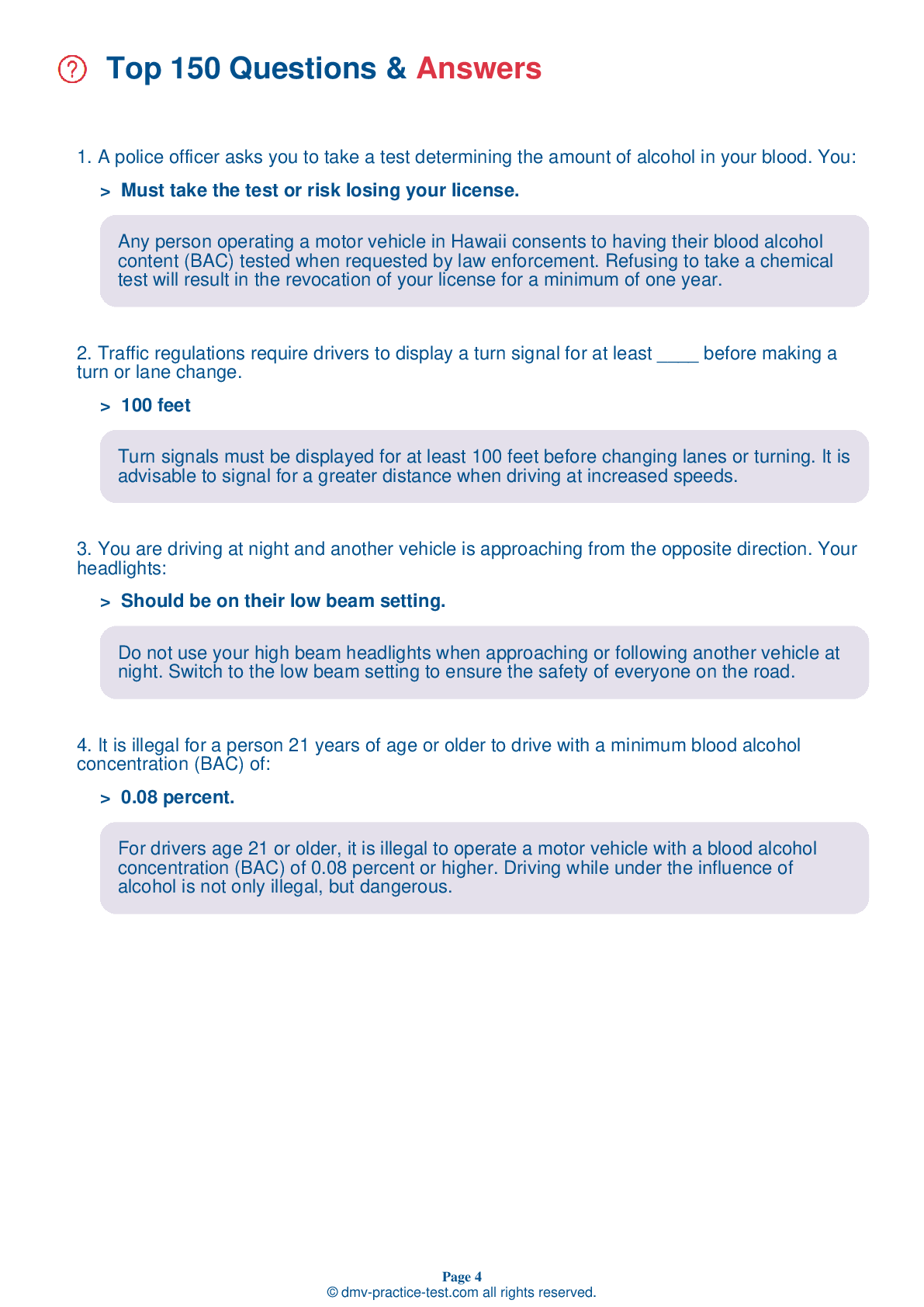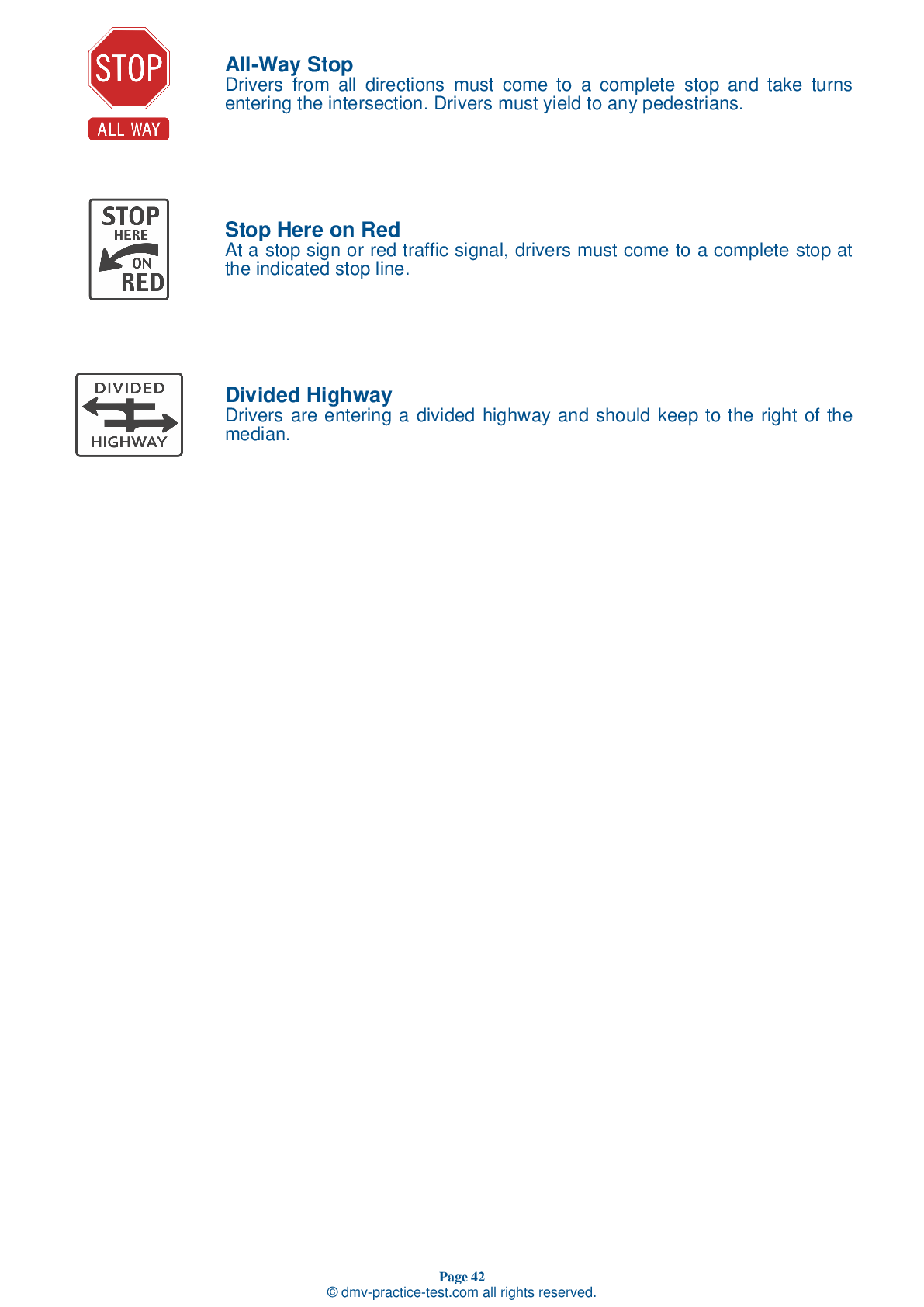FREE Hawaii DMV Practice Test | Driving License Permit test Hawaii 2025 #8 Page 2 of 5
This set of practise tests for the Hawaii DMV has been updated for January 2025. It includes questions based on the most important traffic signs and legislation for 2025 from the Hawaii Driver Handbook. To study for the DMV driving permit test and driver's licence exam, use actual questions that are very similar (often identical!) to the DMV driving permit test and driver's licence exam.
Each question on the practise exam has a tip and explanation to help you recall the ideas. Questions about traffic rules, traffic signs, and driving statutes, as well as information from the Driver Handbook, will be included in the written portion of the official DMV test.
You must properly answer 24 of the 30 questions to receive a passing mark. To help you prepare for your Hawaii instruction permit or driver's licence, take our DMV practise test.
The DMV exam is offered in a variety of languages.
Using any form of testing help will result in an automatic fail, and the DMV may take further action against your driver's licence, so avoid it.
7 . Allow a larger space cushion than usual when stopping:
You should allow more space in front of your vehicle than usual when you are stopped on an uphill slope. If the vehicle in front of you rolls backward toward your vehicle when traffic begins to move again, it is less likely that there will be a collision.
8 . Alcoholic beverages will affect you:
Alcohol can affect you differently at different times. Any amount of alcohol consumed on an empty stomach will affect you more rapidly than it does when you have just eaten. It is safest to refrain from driving when you have consumed alcohol in any quantity.
9 . If not otherwise prohibited by a sign, a driver stopped at a solid red traffic light may turn left:
Unless a sign prohibits such movement, you may turn left on a red light from a one-way street onto a one-way street where traffic is moving to the left. Before turning, you must come to a complete stop and be sure there are no vehicles or pedestrians in your path.
10 . As a pedestrian, you should:
Pedestrians should not enter a street or crosswalk when vehicles are approaching. Though pedestrians have the right-of-way in crosswalks, a vehicle approaching from a close distance may not have the time to stop before entering the crosswalk.
11 . Newer vehicles are equipped with a brake warning lamp on the instrument panel. This lamp:
The brake warning lamp should go out when the parking brake is released. If it illuminates when the foot brake pedal is pressed, the brake system is defective and the vehicle should not be driven.
12 . A vehicle using emergency signals is approaching from the opposite direction on a two-lane street. You should:
If you hear the siren or see the flashing lights of an emergency vehicle, you must slow down, provide a clear path for the vehicle, and stop. Don't try to outdrive the emergency vehicle. This law applies on any two-lane street, even if the emergency vehicle is approaching from the opposite direction.
Need Car Insurance? No problem!
Compare the best rates in Hawaii and find a personalized policy that meets your needs.
1. Are You Currently insured ?
2. Married ?
3. Do you own your Home?
4. Do you have more than 1 car ?
5. Have you or a Family Member Honorably Served in U.S. Military ?
6. Your Name
7. Age
8. Zip code
IMPORTANT REMINDER:Auto Insurance is Mandatory to drive in Hawaii. Get covered before you hit the road to avoid any fines.
Ranked by best match
2025 Hawaii | Frequently Asked Questions
1. Be at least 15 1/2 years old.
2. Complete a state-approved driver's education course and receive a Certificate of Completion.
3. Visit the local DMV with a parent or guardian.
4. Bring necessary documents: proof of identity, proof of legal presence, social security number, and two proofs of Hawaii residency.
5. Pass the written knowledge test.
6. Pay the required fee.



